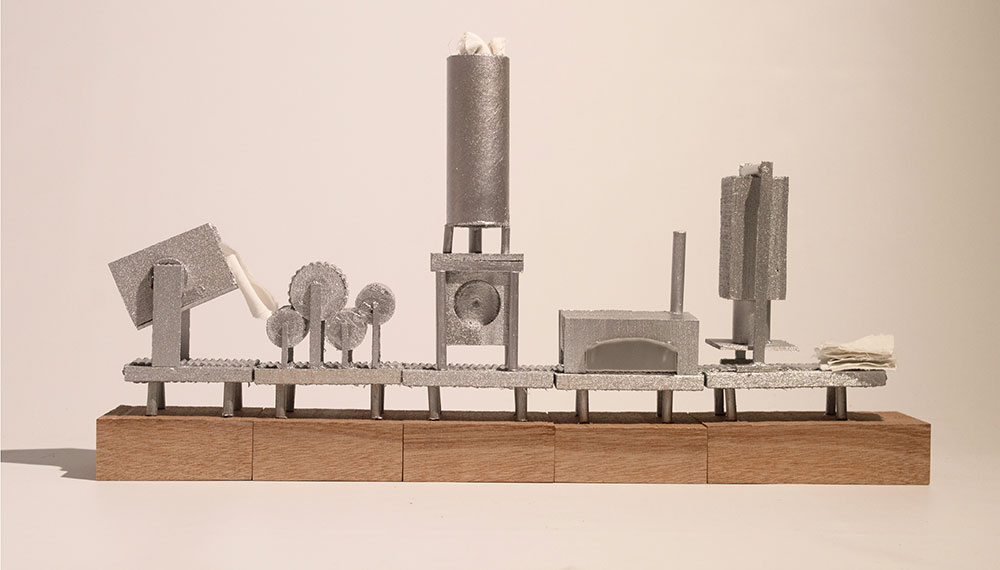…bring people together and they create a collective surplus of enjoyment; bring buildings together and collectively they can give visual pleasure which none can give separately.Gordon Cullen from ‘The Concise Townscape’, 1961.
Throughout history, places, buildings and situations have been reused and adapted: they can survive as cultures and civilisations change. The city is created as layers of archaeology, formed one upon another - a palimpsest of discourse, alterations and networks. The buildings may radically change, but the underlying nature of the place is still present within the street patterns, the position of the river, the direction of the wind, the predominant patterns of the surrounding hills, the building materials and the accents and the actions of the residents.
The idea that the built environment, which initially appears to be permanently fixed in an unchanging static and immobile state, and yet is actually a constantly evolving entity, hurrying from one manifestation to the next to avoid the process of scarification was discussed by the Irish architect John Tuomey. He suggests that ‘when we say that we think of a building as a permanent thing, that is not to say it must stand intact forever or that it cannot be changed’ (2004). He then goes on to discuss the work of Seamus Heaney, who ‘has described one function of memory as a kind of disassembly and remaking of the past in which parts of our history are dismembered in order to be remembered in a way which is useful to our present’ (2004).
Continuity in Architecture have been discussing the City in this way since its inception in the early 1990’s, inspired by the observations of Thomas Schumacher, Colin Rowe and Gordon Cullen. In the past few years the Atelier has worked in collaboration with local authorities and local interest groups to discuss the importance of this way of looking at the City today, and in light of contemporary global challenges. This year we have worked with Preston Council and have completed the final year of research in three distinct strands:
Contentious Heritage began in the 2020.2021 academic year as a collaboration with U Hasselt based on ongoing research in the Atelier which examines buildings and structures with a difficult past. The ongoing ‘Sinister Dialogues’ (Sanderson+Plevoets) research project and the 2019 ‘UnDoing’ Exhibition (Sanderson+Stone) made connections between architectural practice and art practice in the field of Contentious Heritage, considering specifically the work of artists Abigail Reynolds, Nazgol Ansarinia and Philippe Calandre, which acted as the starting point of the 2022.2023 project. Projects in this strand examined a sequence of burnt down buildings in Preston as well as the old Magistrates Court and Jail, and St Joseph's Orphanage.
Encounter and Exchange is underpinned by the work that Continuity in Architecture completed last year in Accrington and in previous years in Bradford, Shrewsbury, and Rochdale on the future of the Historic High Street. Examining sites across the City Centre of Preston, the project began with the exploration of key texts on the composition of urban space by Sebastiano Serlio, Camillo Sitte and Howard Robertson. Projects in this strand include the redevelopment of Preston Flag Market, a sustainable community next to Preston Bus Station and a new Mill, Market and Horticulture Centre located at the end of the High Street.
Settlement Chronologies has undertaken research into the origins, evolution, development and imagined futures of small settlements. Inspired by ‘The Social Logic of Space’ (Hillier, 1989), ‘The Structure of the Ordinary’ (Habraken,1998) and ‘A Pattern Language’ (Alexander et al, 1977), this year the Atelier investigated a series of satellite towns and villages in close proximity to Preston. Projects in this strand included the reuse of Ribblesdale Cement Works, the renovation of Farrington Mill Town and a new English Village in Newsham.
In all our research strands we have continued to draw inspiration from a deep understanding of both the tangible and intangible qualities of place, amplified by the examination of new case studies (Sergison Bates, LRO, Feilden Fowles, Adjaye Associates, noA, Mae Architects, Helga Blocksdorf Architekture, Flores i Prats Arquitectes), site visits to the Preston Harris and Blackpool Museum (Buttress), factory visits to Darwen Terracotta, KLLangton Decorative Plasterworks and Hargreaves Foundry and a keynote talk from Stephen Bates.


